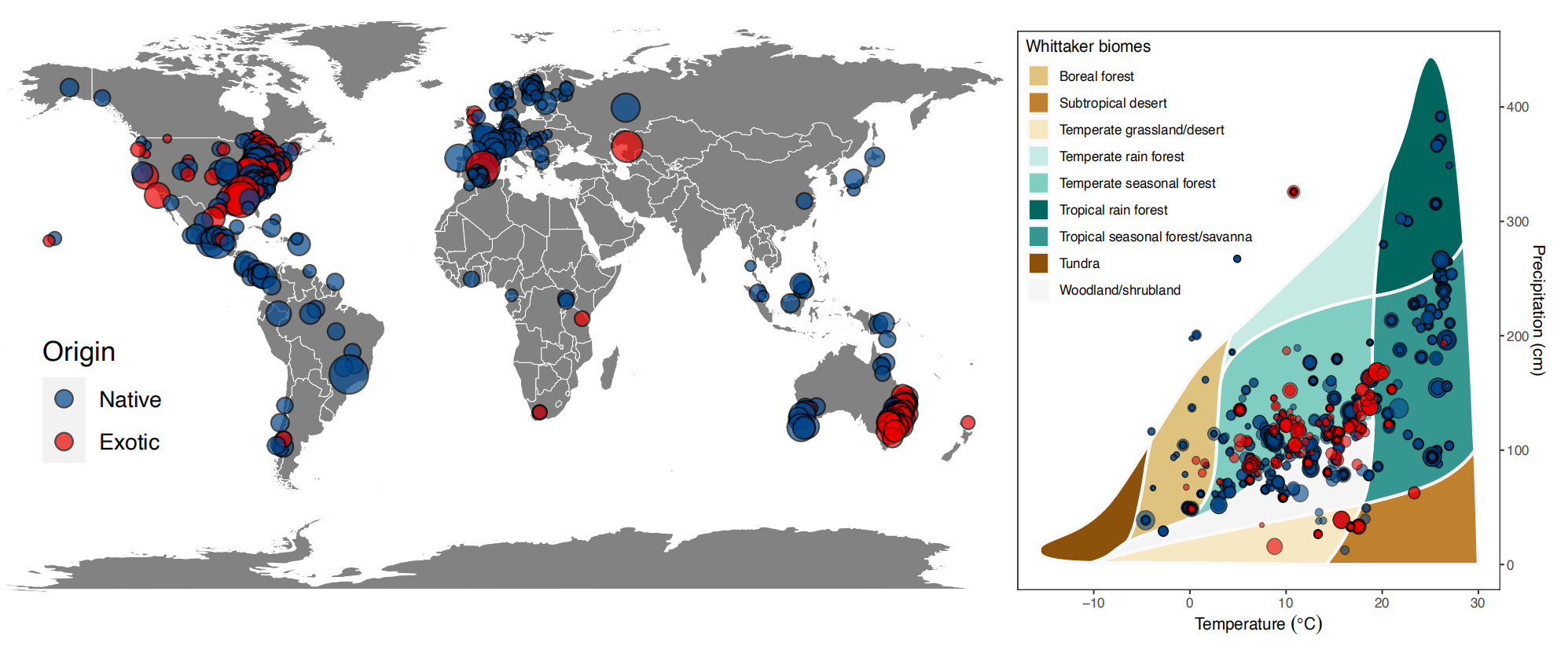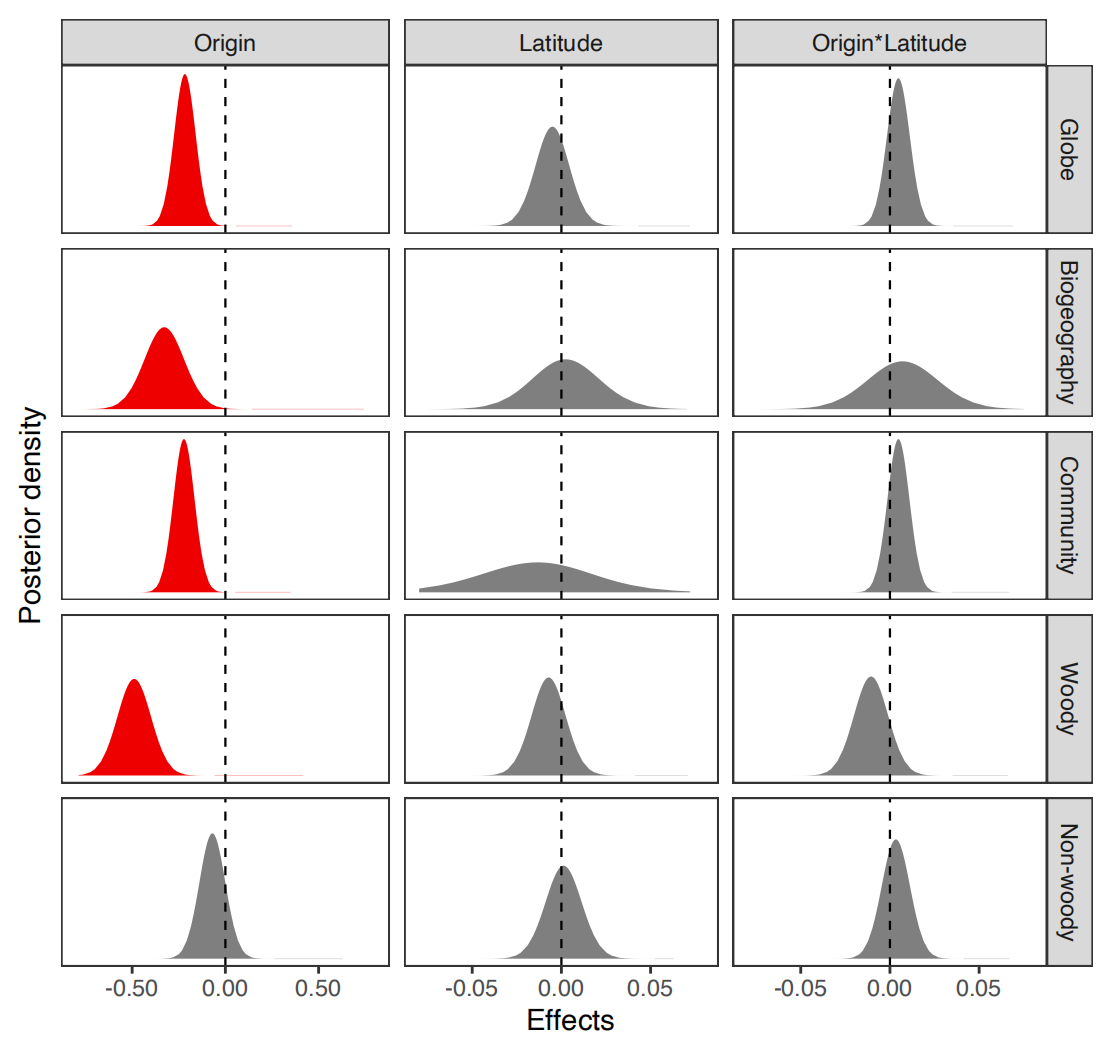Recently, the ornamental fishery research office of Pearl River Fisheries Research Institute confirmed the universality of the core hypothesis of alien species invasion "natural enemy release hypothesis" through global scale big data integration and analysis, and revealed that there is no systematic latitude variation trend of natural enemy release, and put forward a self-adaptive view on the current "using latitude variation of natural enemy release to predict geographical pattern of biological invasion on large scale" My own opinion. The research paper "a global analysis of my release and its variation with latitude" was published online in the international famous ecological journal global ecology and Biology (impact factor 6.446).
Invasion of alien species is one of the five global environmental problems in the 21st century. One of the most classic hypotheses ("natural enemy release hypothesis") holds that the successful invasion of alien species is mainly due to the fact that they have escaped the restriction of natural enemies, and thus successfully settled, rapidly spread and caused harm in the invaded area. However, the selection of natural enemies is still much more controversial than that of native species. By collecting global database and literature data, this study has carried out the largest systematic verification of this hypothesis so far, involving 1098 species, covering almost all the global biota. Hierarchical Bayesian method was applied to study the effects of pedigree and spatial autocorrelation, nonlinear relationship, differences between the northern and southern hemispheres, and main climatic factors. It was confirmed that alien species suffered less damage from natural enemies than native species. At the same time, combined with two meta regression, it is found that the intensity of "natural enemy release" does not change with latitude on a large scale. This discovery challenges the current concept of "applying the latitude variation of natural enemy release to predict the geographical pattern of species invasion on a large scale". The results of this study can provide important reference for understanding the mechanism of successful invasion of alien species, the large-scale variation of species interaction intensity, and the geographical distribution of invasive species.
The research was supported by national key R & D Program (2018yfd0900705), Guangzhou Science and technology program "Zhujiang Xinxing" (201906010039), and National Natural Science Foundation of China (31400487). Zhujiang Fisheries Research Institute of Chinese Academy of Fishery Sciences is the first unit to complete the paper, Xu Meng, associate researcher of ornamental fishery research office, is the first author, and Hu Yinchang, researcher, is the corresponding author.
Article link:https://onlinelibrary.wiley.com/doi/full/10.1111/geb.13229




